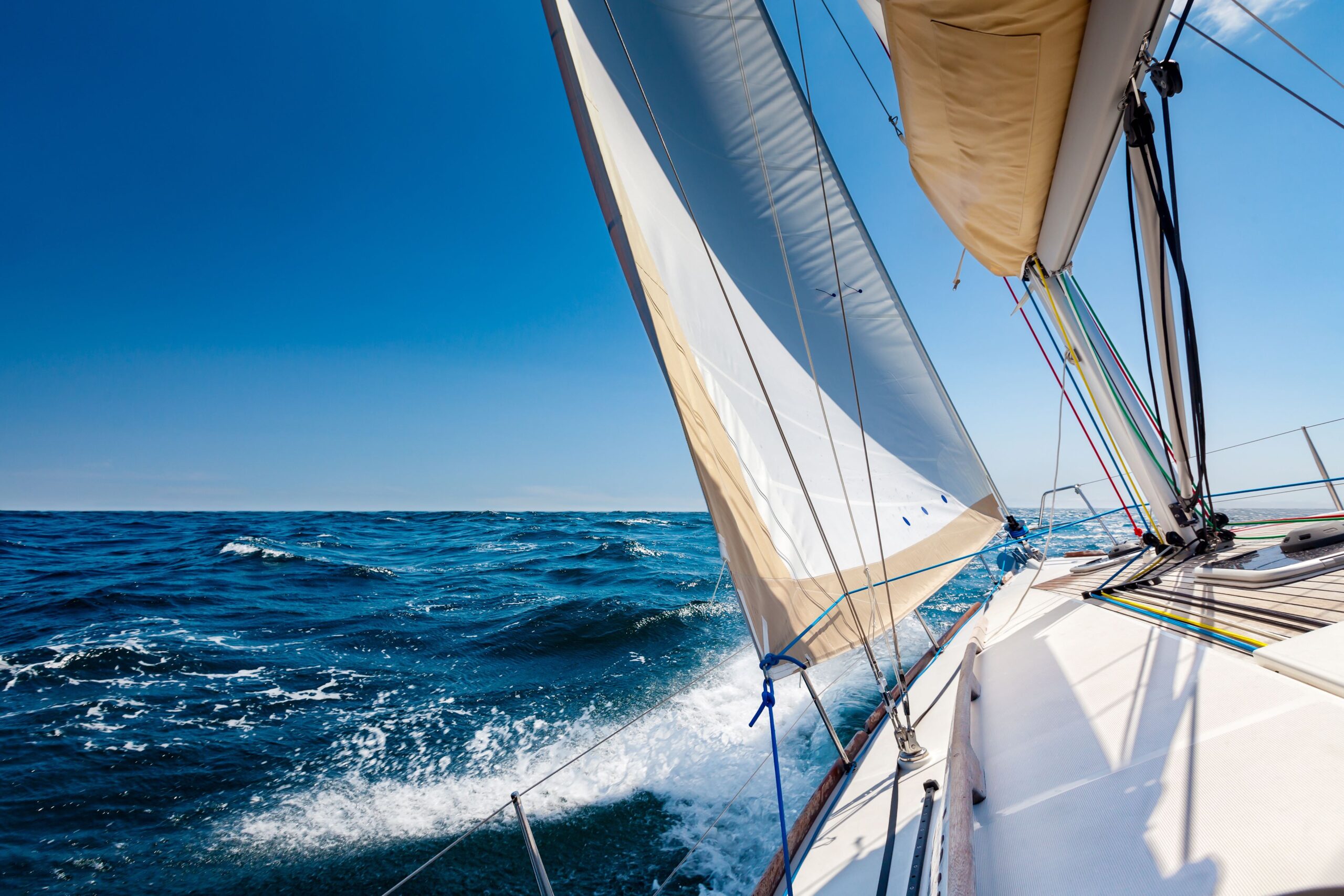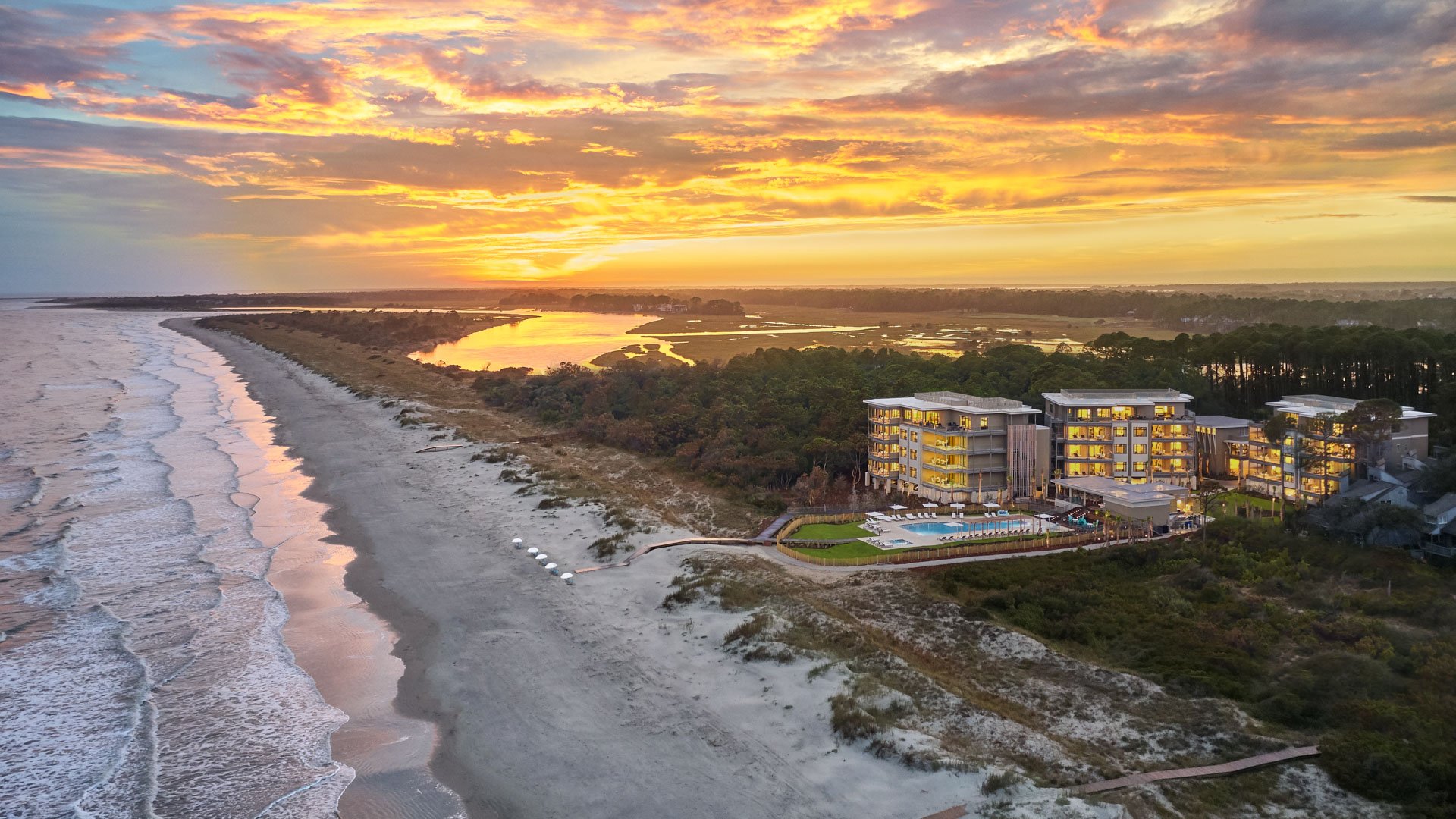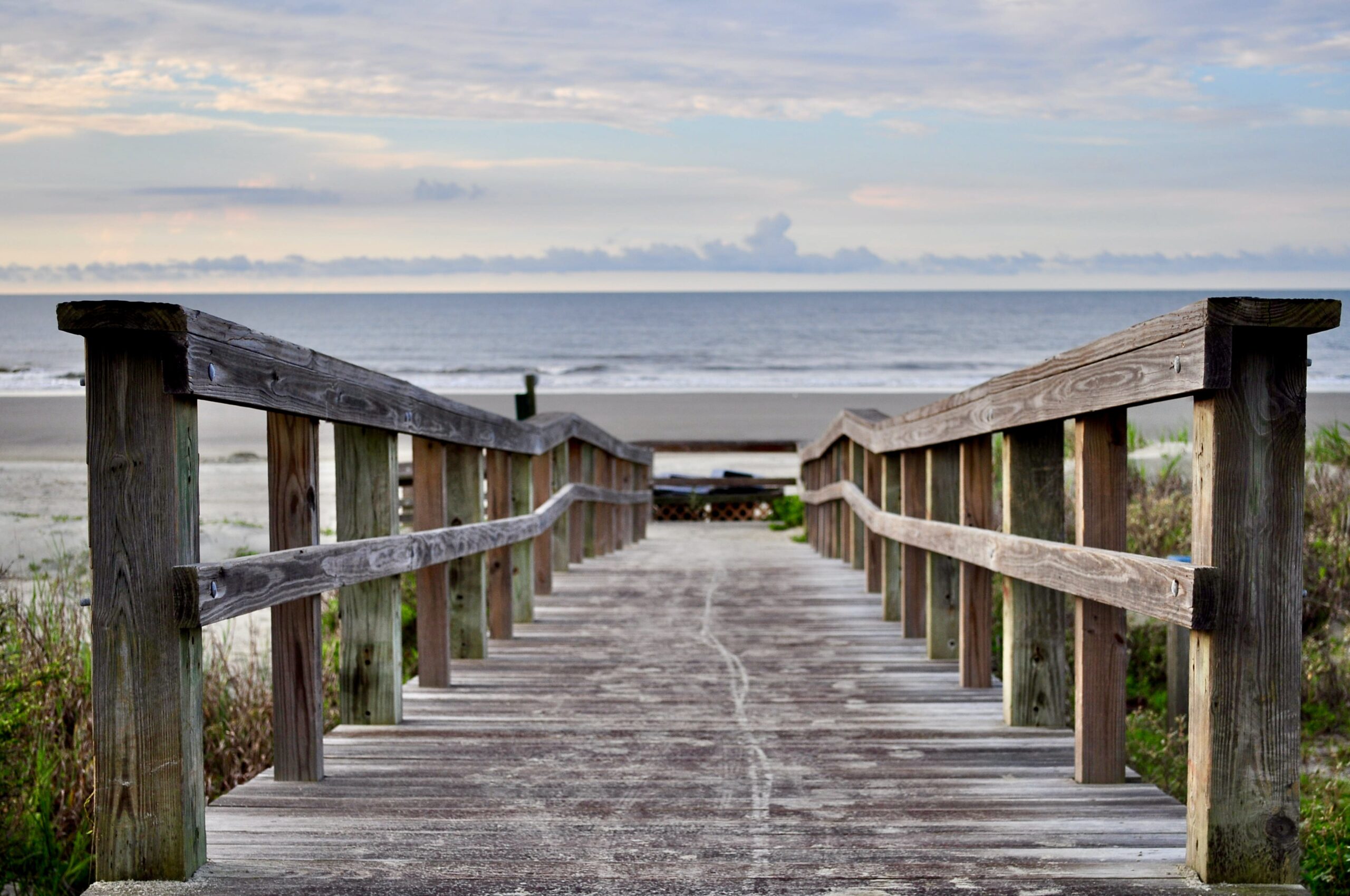6 Ways Kiawah Fishing Hooks You
September 03, 2020

PLENTIFUL VARIETY
Any experienced fisherman will tell you, if you are looking for variety, saltwater is where it’s at. Lucky for you, Kiawah’s cup runneth over. We’re oceanfront, sure, start there. But also, unlike other rivers that flow fresh to brackish to salt, the Kiawah River moves in two opposing directions and is all saltwater. It’s technically a “saltwater tidal river”. (Incidentally, this is why Kiawah is classified as a true island.)
But back to the fish! There are many to choose from year-round, including the immensely popular Red Drum. Things really ramp up from May to November during which in one day you can catch up to ten or more species. From Labor Day to Thanksgiving nonmigratory fish gorge themselves as the autumn days shrink into winter and bait thins out. A day on the water becomes more “catching” than fishing. It’s a fun surprise to see who’s at the end of the line each time.
Likely characters:
Inshore – In the more protected waters (estuaries, rivers, and bays) snatch up red fish, jack crevalle, spotted sea trout, flounder, and tarpon.
Near Coastal – In sight of shore, to about ten miles out, get ready for cobia, king mackerel, triple tail, and spadefish.
Off Shore – 10-60 miles out troll for marlin, sailfish, wahoo, and mahi mahi. Look for color temperature breaks or floating patches of weeds. That’s where these sports fish hang out a couple meters below the surface. Or cruise to one of 70 artificial reefs off our coast for bottom fish like snapper, wreckfish, tilefish, and grouper. Bonus: great scuba diving so bring your gear.
TIDAL DIVERSITY
Can only steal away for a few hours? No problem. Our drastic tide change has your back: deviating seven or eight feet within a six-hour period. Low tide brings the fish to you; and within a short window as the style of fishing changes so does the catch.
In the warmer months, five nights of full moons create some of the best “tailing” you’ll ever experience. As you walk the marsh or glide in a flats boat, red fish come out of the grass almost doing a headstand with their tails in the air. It’s an excellent opportunity for sight fishing, including with a fly.
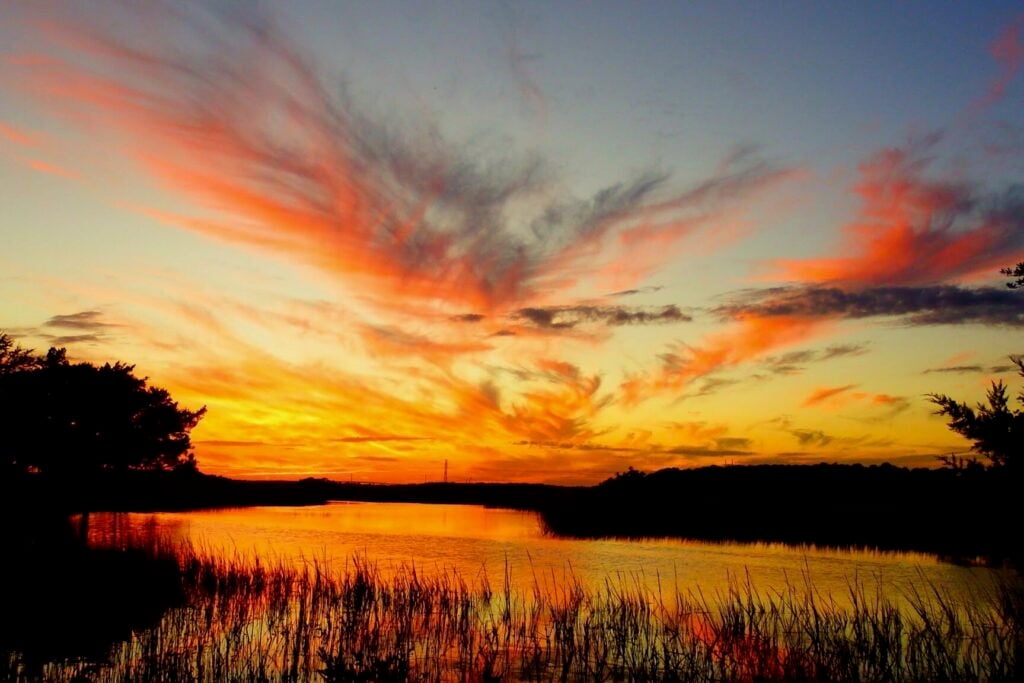
PEACEFUL SELECTION
“Why haven’t we seen another boat yet?” Our friend Captain John Ward of Affinity Charters hears this all the time from his amazed (and thrilled) Timbers Kiawah clients. The answer is two-fold. First, most of Kiawah Island is private. Without access to Mingo Point or the owners’ docks at Rhett’s Bluff and Eagle Point, the closest place to put in is 12-13 miles away at Folly Beach or James Island. Second, Kiawah Island has some of the largest oyster beds in the world. At high tide they are covered up, but at low tide millions come exposed, treacherous for those lacking local awareness and expertise. (“We rescue people all the time,” Captain John says.) Combined, these factors reduce overall boat traffic, meaning you aren’t competing with others for a great spot, and can enjoy the surroundings in peace.
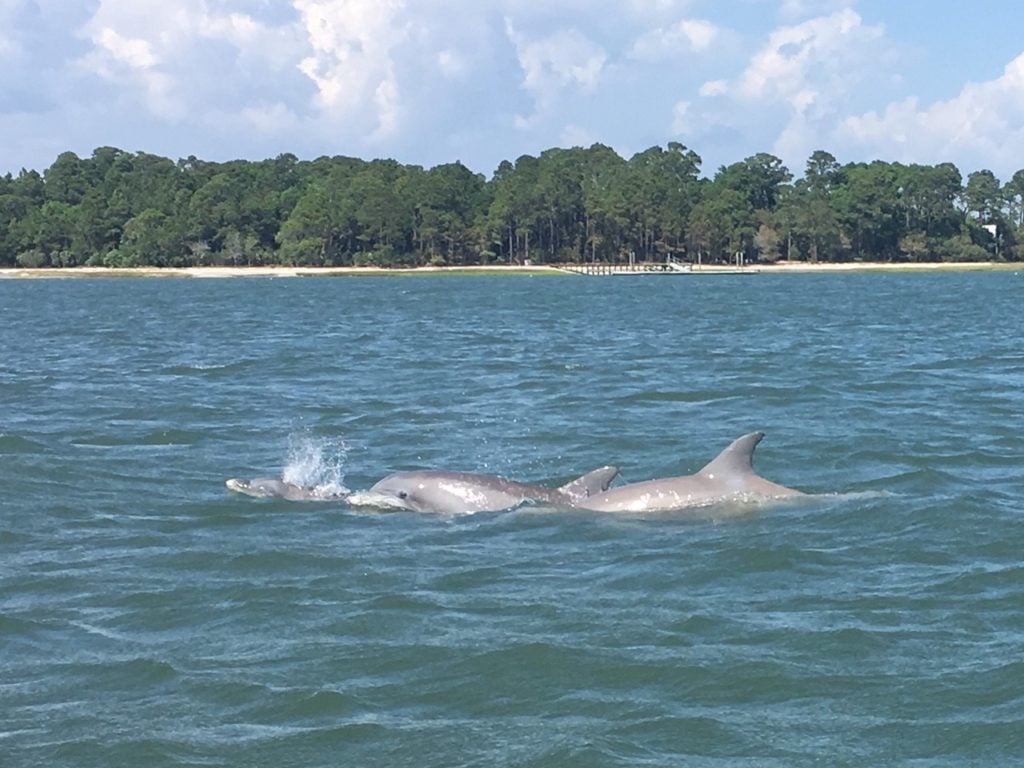
STELLAR ANIMAL SIGHTINGS
Perish the thought, but not everyone likes to fish. Don’t leave those friends and family at home though because there’s a plethora of enchanting wildlife to view on, in, and from the water. Thanks to Kiawah’s conservation-grounded philosophy, animals here are fairly at ease with people since they aren’t being hunted or bothered. In addition to an almost daily dolphin show, you’ll be entertained by sea turtles, and perhaps even a manatee. From your key vantage point on the boat spot wild turkey, mink, fox, deer, and bobcat. Feathered friends on display include roseate spoonbill, oystercatcher, southern skimmer, egret, heron, osprey, and the majestic bald eagle.
UNDISTURBED ENVIRONMENT
In South Carolina, the state owns the marsh and doesn’t allow construction there. (Special permitting is required to even put up a dock.) The lack of industry and development enables a thriving ecosystem. There are so many fiddler crabs in the marsh they balance out the nitrogen level, eliminating the pungent smell typically associated with it. It’s an unexpected delight to breathe in fresh salt air instead. When seasons change, it’s the swaying marsh grass that changes color, from deep verdant green to brilliant gold to rusty brown. And while the big tides here stir up the sand in the water close to shore, once you get about three miles out it’s crystal clear. At ten miles it’s a lovely pearl green, and beyond that your eyes are treated to a stunning cobalt blue.
PRISTINE WATER QUALITY
The beauty of the water goes beyond aesthetics — its quality is also second to none. Charleston Waterkeeper performs weekly checks throughout the region for their DHEC-approved “Recreational Water Quality Monitoring Program” and the tests along Kiawah yield an excellent report every time. Extremely clean water translates to healthier fish for eating. And that means what you catch at Kiawah is not only better tasting, it’s better for you.
From start to finish, when fishing at Kiawah you can’t go wrong. Please contact the front desk at 843.867.7100 for help with arranging and curating your Lowcountry fishing adventures.
Want more outdoor fun? Read more about horseback riding on Kiawah Island.


